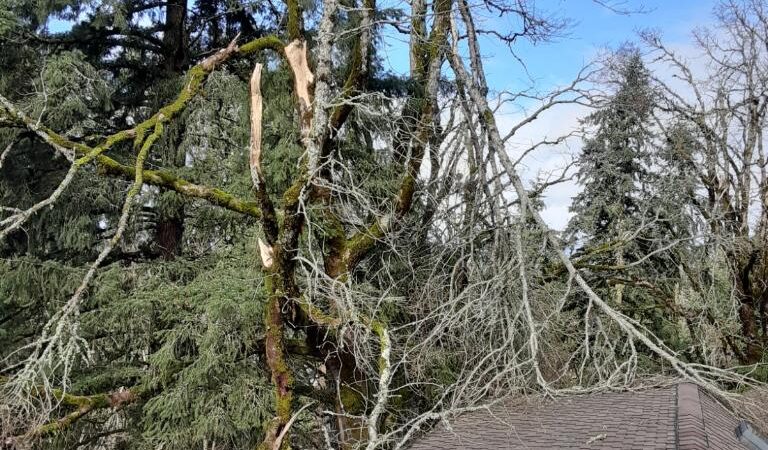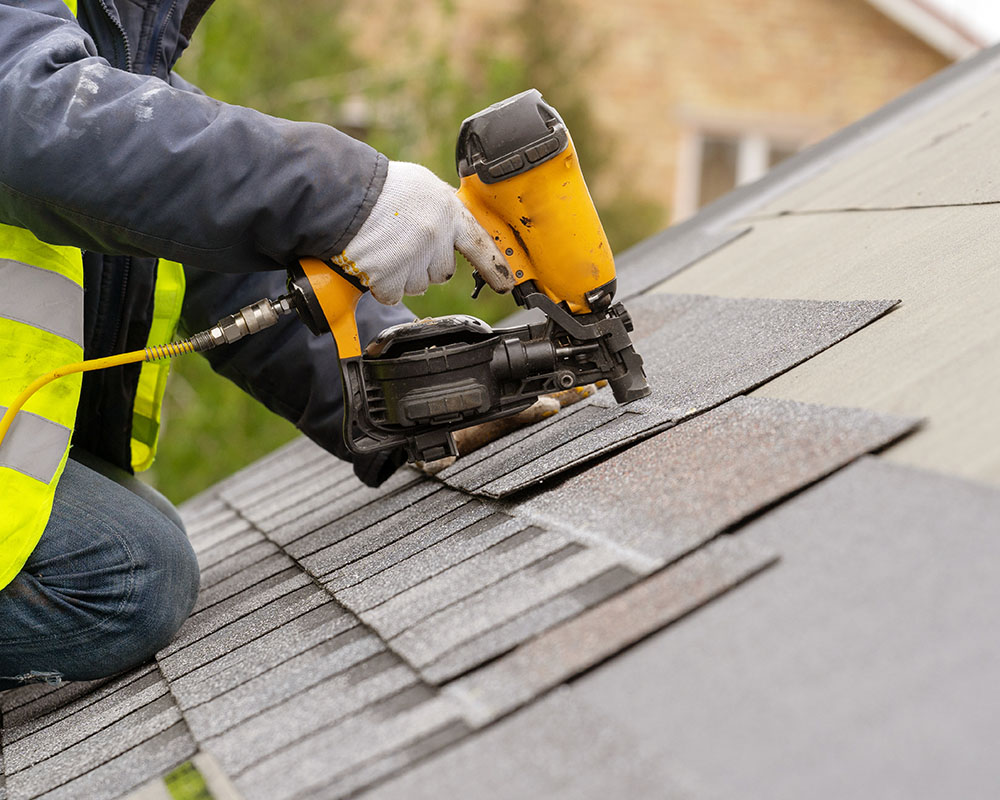What Should I Do If a Tree Falls on My Roof Because of a Storm in Portland

As a well-established family-owned company based in Oregon, the team at Cascade Roofing Portland has extensive experience handling various roofing issues caused by the unpredictable weather conditions in the region. Among the common challenges we encounter is the aftermath of trees falling onto roofs during storms. While it’s distressing for any homeowner, being prepared and knowing the steps to take can greatly alleviate the situation.
Step 1: Ensuring Safety First
Extracting a fallen tree demands more than DIY enthusiasm; it necessitates professional intervention. Entrust this hazardous task to experts armed with the requisite tools, equipment, and expertise to ensure not only effective removal but also the safety of your property. Professionals adeptly navigate the complexities, mitigating the risk of additional harm to your home. Opting for their services is a strategic investment, averting potential repair costs that DIY attempts might incur, especially considering that home insurance may not cover damages resulting from untrained efforts. Prioritizing professional assistance safeguards not only your property but also your financial well-being.
Step 2: Documenting the Damage
After securing safety and confirming no immediate threats to your household, embark on thorough documentation of the damage. Capture numerous photographs and compile detailed notes delineating the destruction both inside and outside your home. This meticulous documentation serves as invaluable evidence when initiating a claim with your insurance company. Providing a comprehensive record ensures clarity in assessing the extent of the damage and facilitates a smoother claims process. From interior impairments to external wreckage, detailed documentation becomes a vital resource, enhancing your ability to articulate the impact of the fallen tree and supporting your case for efficient and equitable insurance coverage.
Step 3: Contacting Your Insurance Provider
Promptly contact your homeowners’ insurance provider following the incident, furnishing them with details and the evidence you’ve meticulously gathered. This crucial step initiates their claims process, allowing them to assess the situation comprehensively. In fortunate circumstances, an adjuster may be dispatched to your home within a few days, streamlining the evaluation process. Your timely communication and submission of evidence play a pivotal role in expediting the insurance claims process, ensuring a swift response from your provider, and facilitating the necessary steps to restore your home and mitigate the aftermath of the fallen tree.
Step 4: Professional Tree Removal Service
Extracting a fallen tree demands more than DIY enthusiasm; it necessitates professional intervention. Entrust this hazardous task to experts armed with the requisite tools, equipment, and expertise to ensure not only effective removal but also the safety of your property. Professionals adeptly navigate the complexities, mitigating the risk of additional harm to your home. Opting for their services is a strategic investment, averting potential repair costs that DIY attempts might incur, especially considering that home insurance may not cover damages resulting from untrained efforts. Prioritizing professional assistance safeguards not only your property but also your financial well-being.
Step 5: Contacting Your Local Oregon Roofer
Once the tree is removed, Cascade Roofing Portland is at your service. Our skilled roofing experts will assess the damage, provide a comprehensive repair estimate, and guide you through restoration. We can also communicate with your insurance company if needed, offering them an estimate and discussing the required repairs.
When we take on a project like this, our initial focus is on safeguarding your home by installing a protective tarp to shield it from the elements and prevent further damage. Subsequently, we’ll address any damaged roofing materials, ensuring everything is sealed and watertight.

